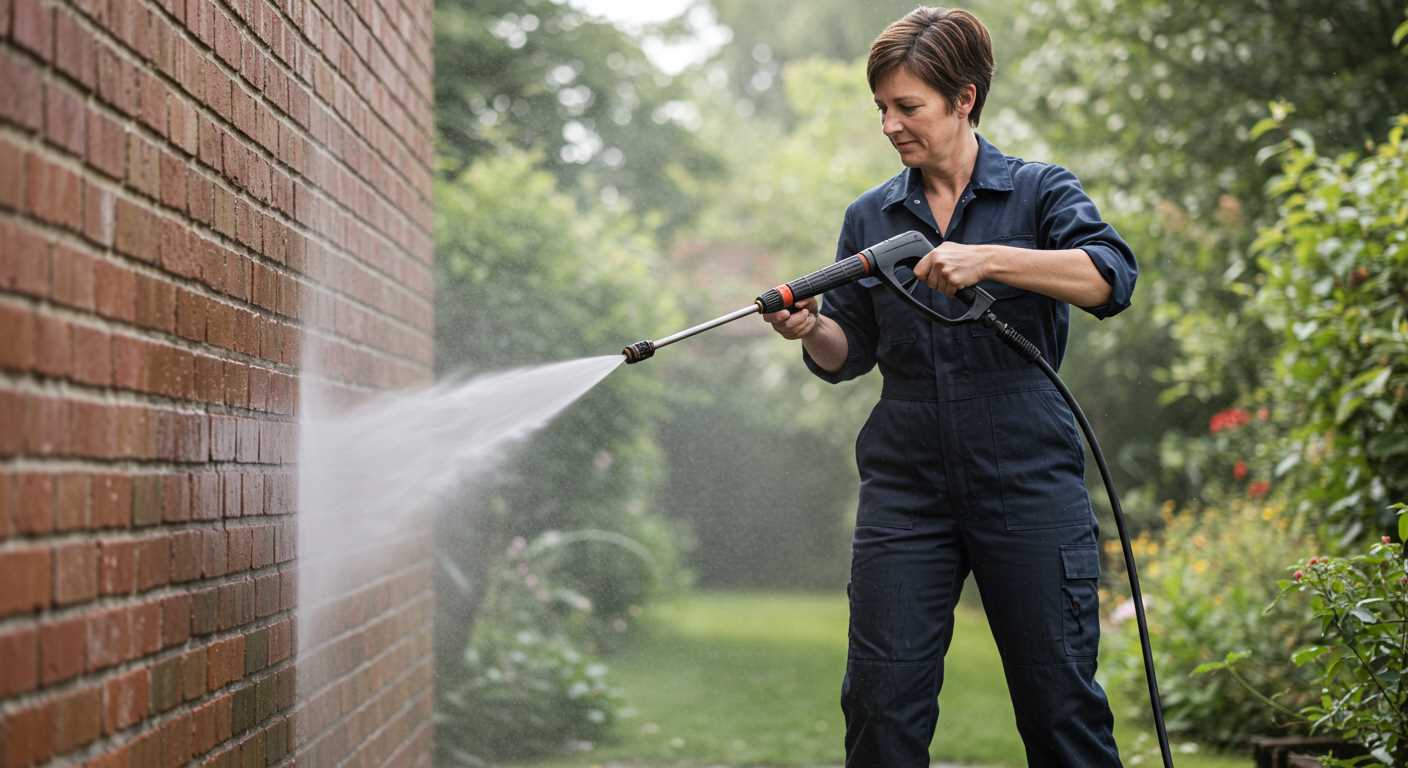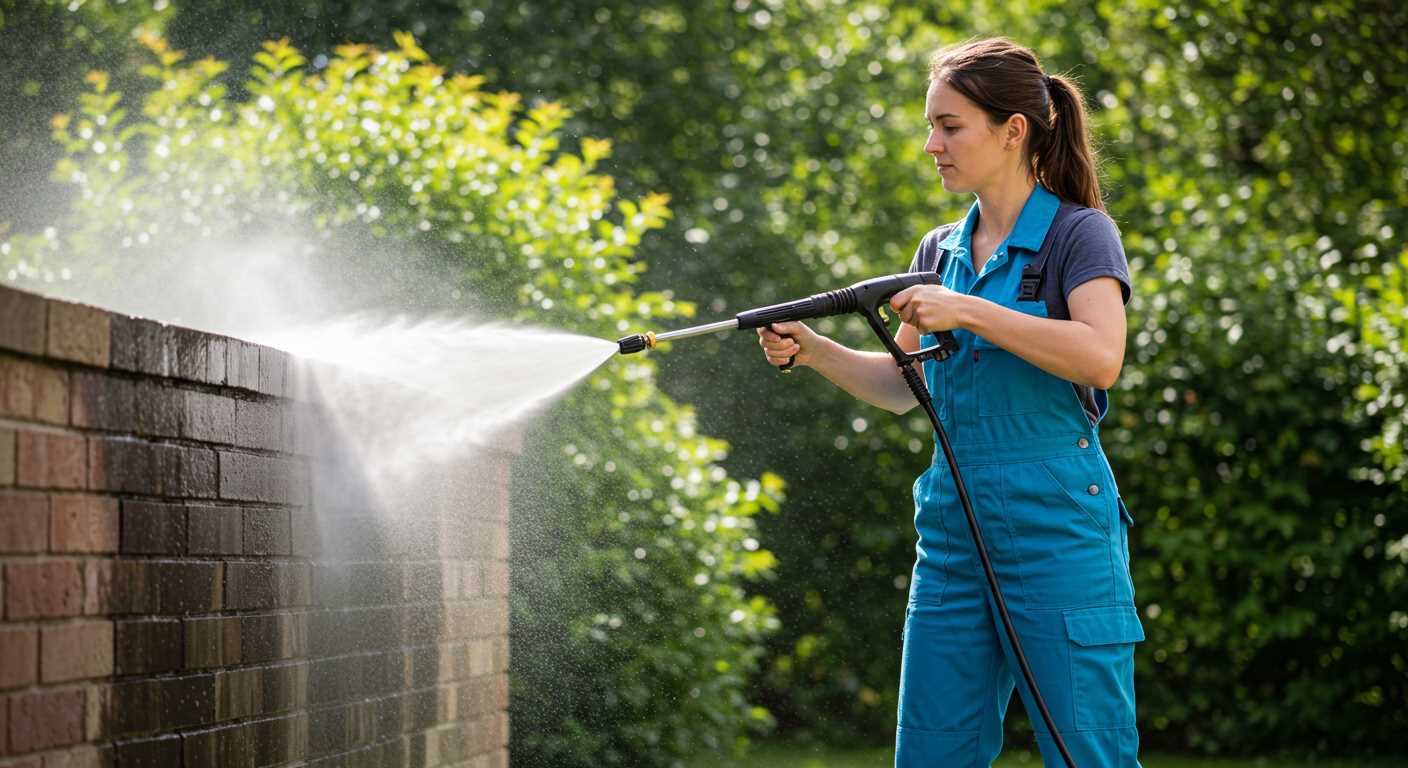



For optimal results, select the appropriate solution type that matches your cleaning task. Always refer to the manufacturer’s guidelines to ensure compatibility with your machine. Begin by diluting the solution as specified on the label; this prevents damage to internal components.
To initiate the process, locate the chemical injection system, typically positioned near the nozzle attachment. Make sure the equipment is turned off and safely disconnected from the power supply. Carefully pour the diluted cleaning solution into the dedicated reservoir. Avoid overfilling to prevent any leakage during operation.
After filling, reattach any covers securely and connect the hose and wand. Turn your unit back on to test the application of the cleaner. Adjust the nozzle settings to deliver an even flow, ensuring the right mix reaches the surface. During use, maintain a consistent distance from the surface being treated for the most effective outcome.
Regular maintenance of the injection system is crucial. After each use, flush the lines with clean water to prevent buildup and clogs. Staying diligent about these practices guarantees a long-lasting and efficient cleaning experience.
Choosing the Right Chemicals for Your Pressure Washer
Select specific formulations based on the surfaces you’re cleaning. For tougher stains on concrete or brick, opt for alkaline solutions designed for heavy-duty tasks. For gentle cleaning, such as vehicles or delicate surfaces, choose pH-neutral products that won’t damage paint or finishes.
Testing in a small area is wise before applying to the entire surface. This helps to identify any adverse reactions, allowing for adjustments in your choice of cleaner. Always read the manufacturer’s guidelines; some equipment may require specialised solutions to avoid warranty issues.
Compatibility and Environmental Considerations

Check the compatibility of your selected cleaner with your unit’s materials. Some aggressive ingredients can corrode components or hoses. Additionally, consider using biodegradable options, which are safer for the environment while still providing cleaning efficacy.
Storage and Safety Precautions

Keep cleaning agents stored in their original containers, secure and away from direct sunlight. Wear appropriate protective gear when handling these substances, including gloves and goggles, to ensure safety during the application process.
Understanding the Chemical Injection System
When selecting a model, look for a built-in injector that uses a siphon tube system. This method relies on a venturi effect which draws liquid from a container into the main flow, allowing for seamless integration during use.
It’s vital to position the chemical container at a lower level than the machine to ensure proper siphoning. If the tank is too high, gravity can thwart the process and lead to inefficiencies.
Equip the system with the right nozzles. A low-pressure nozzle is preferable since it enables a wider dispersion of the solution, enhancing coverage and effectiveness. Ensure compatibility with the cleaning agents you intend to use.
Regular maintenance is key. Periodically check for clogs in the siphon tube and injector port. Use distilled water to flush the system after each project to prevent crystallisation or residue build-up that could impair functionality.
Adjustment capabilities are also worth noting. Many units include a dial to control the flow rate, allowing for tailoring the concentration level based on the task. This feature accommodates varying jobs without needing to switch solutions constantly.
Lastly, ensure that the materials of the chemical reservoir and hoses are resistant to corrosion. Using incompatible items can lead to leaks or degradation, resulting in added costs and downtime during repairs.
Preparing Your Equipment for Chemical Use
Before commencing with the introduction of solutions into the system, confirm that your device has been thoroughly cleaned. Residual substances from previous uses can interfere with performance. Run clean water through the system to flush out any remnants, paying particular attention to the nozzle and hoses.
Verify that the injection system is functioning correctly. This includes checking the injector and any filters for blockages. A clogged filter can compromise the flow and prevent the materials from being mixed properly.
Adjust the settings according to the material you intend to utilise. Each formulation has unique properties; follow the manufacturer’s guidelines for mixing ratios to avoid damage to surfaces or equipment.
Equip the unit with the appropriate nozzle, typically a low-pressure option, to facilitate the even application of the solutions. Utilize the nozzle’s wider spray pattern for effective coverage without the risk of damage.
Protective gear is crucial. As a precaution, wear gloves and goggles during application. Ensure the work area is clear of any personal items or plants that could be adversely affected by splashes or overspray.
Lastly, perform a test on a small, inconspicuous area to assess compatibility and effectiveness. This step allows detection of any adverse reactions prior to full-scale application.
Properly mixing solutions for optimal results

To achieve the best outcomes, precision in mixing solutions is paramount. Always refer to the manufacturer’s instructions for dilution ratios. This helps prevent damage to surfaces and guarantees an efficient cleaning process.
Employ measuring cups or syringes for accuracy when combining various products. A consistent method ensures uniformity across multiple uses. Mixing should occur in a clean, dry container to avoid contamination and preserve effectiveness.
Be aware of compatibility between different solutions. Some combinations can lead to adverse reactions, diminishing cleaning power or causing damage. As a general rule, avoid mixing acidic and alkaline substances. Always conduct a patch test on a small, inconspicuous area prior to full application.
Here’s a simple guide to proper mixing ratios for common cleaning agents:
| Cleaning Agent | Dilution Ratio |
|---|---|
| Alkaline Detergent | 1:5 (one part detergent to five parts water) |
| Acidic Cleaner | 1:10 (one part cleaner to ten parts water) |
| Foaming Agent | 1:3 (one part foamer to three parts water) |
Mixing should take place in a well-ventilated area, as some products emit vapours that can be harmful. Always use personal protective equipment: gloves and goggles are a must.
After mixing, allow the solution to sit for a few minutes before application. This ensures the components synergise, enhancing their effectiveness. In addition, keep mixed solutions stored in labelled containers to avoid confusion during future projects.
Cleaning and Maintaining the Chemical Injection System
Regular upkeep of the chemical injection assembly is crucial for optimal performance. Start by disconnecting the system from the power supply to ensure safety. Remove any residual substances by running clean water through the injector. This helps prevent clogs from forming and keeps the mechanism operating smoothly.
Daily Maintenance Steps
- Flush the injector after each use to eliminate any leftover solution.
- Inspect hoses and connections for leaks or wear; replace damaged parts immediately.
- Check filters to ensure they are clean; replace them if they appear clogged.
Periodic Deep Cleaning
- Every month, disassemble the injection system for thorough cleaning.
- Soak parts in a mild cleaning solution to break down any build-up.
- Rinse and dry components thoroughly before reassembly.
Monitor the system’s performance. If you notice a decrease in efficiency, it may indicate the need for deeper maintenance or potential part replacement. Keeping the injection unit in top condition will significantly enhance the overall cleaning efficacy of your equipment and prolong its lifespan.
Safety Precautions When Handling Cleaning Solutions
Always wear personal protective equipment (PPE), including gloves, goggles, and a mask, to prevent irritation and exposure to harmful substances. Ensure the working area is well-ventilated, especially when dealing with concentrated mixtures or volatile agents. Position containers securely to avoid spills and leaks.
Storage and Disposal
Store solutions in their original containers with labels intact. Keep them out of reach of children and pets, and away from heat sources. Dispose of unused or expired products according to local regulations. Many areas provide hazardous waste disposal facilities for this purpose.
Emergency Preparedness
Have a first aid kit readily available. Familiarise yourself with the material safety data sheets (MSDS) for each substance you use, as they contain information on potential hazards and first aid procedures. In case of accidental contact, rinse the affected area with water immediately and seek medical advice if necessary.
FAQ:
What types of chemicals can I safely add to my pressure washer?
When adding chemicals to your pressure washer, you’ll want to ensure they are compatible with the machine. Common options include detergents specifically designed for pressure washers, which are formulated to assist in cleaning surfaces like concrete, cars, and patios. Additionally, you might consider using mould and mildew removers or degreasers for more stubborn stains. Always check the manufacturer’s guidelines for your pressure washer model to verify that the chemicals you choose will not damage the machine or void any warranties. Never use bleach or ammonia, as they can be harmful to both the pressure washer and the environment.
How do I properly mix and apply chemicals in my pressure washer?
Mixing and applying chemicals in a pressure washer should be done with care. Start by reading the instructions on the chemical’s label for guidance on dilution ratios. Generally, you will mix the chemical with water in a separate container based on the manufacturer’s recommendations. Next, fill the chemical tank in the pressure washer with the diluted solution, ensuring not to exceed the maximum fill line. When applying, use a low-pressure spray nozzle to distribute the chemical evenly across the surface you’re cleaning. Allow the solution to sit for a few minutes to penetrate the stains, and then follow up with a high-pressure rinse to remove the detergent and dirt. Always wear protective gloves and eyewear while handling chemicals to ensure your safety.









